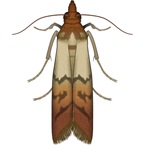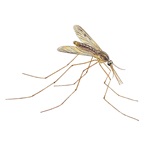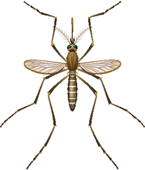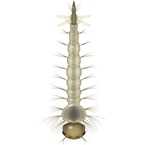Species category: Flying pest
Scientific Name: Culicidae
Description:
2 types of species:
- Aedes aegypti (Yellow Fever Mosquito)
- Aedes albopictus (Asian Tiger Mosquito)
The adult Aedes mosquitos range from 4-7mm and can be identified by their black and white stripes, also called ‘scales’. Only the female mosquitoes will bite and consume blood. Aedes aegypti is an indoor-biter, and Aedes albopictus is an outdoor-biter.
After taking a complete bloodmeal, a female can produce 100-200 eggs per batch. Eggs of Aedes aegypti are long, smooth, and approximately 1mm long. When first laid, eggs appear white but within minutes, turn a shiny black.
In warm climates, eggs may develop in as little as two days. In cooler climates, the development may take up to a week. Eggs can survive desiccation for months and hatch once submerged in water, making the control of Aedes aegypti very difficult.
Behaviour:
Aedes mosquitoes like warm weather but rest during the hottest part of the day. They are active at dusk and dawn, approximately from 6am-7am, and 7pm to 8pm.
Aedes mosquitoes are attracted to food from great distances by:
- Light
- CO2
- Odour
They are weak flying insects and become inactive in windy conditions.
Only female mosquitoes bite, requiring blood to get nutrients for egg development. Females store many-times their own weight of the host’s blood, and an Aedes mosquito can bite a few times to fill up its appetite.
Region:
Typically natives of warm climates, mosquitoes are widespread in Malaysia.
Habitat:
Larval and pupal stages are aquatic. Breeding sites may be very small - transient pools of water close to houses or ponds and streams nearby. Mosquitoes are most commonly found outdoors, often close to the place they emerged.
They can travel long distances up to 200m in search of food or the perfect egg-laying location. Females will then enter all rooms looking for blood and often strike victims when they rest.
Risks:
Aedes mosquito is a major vector that transmits life-threatening illnesses such as Dengue fever and Chikungunya in the region. They also transmit Yellow fever in certain regions in North America, Australia and Asia.
Mosquitoes can be a nuisance if the bites are harmless but for some can cause allergic reactions and lead to secondary infections when victims scratch the wounds.




